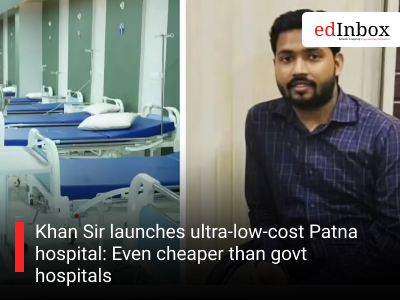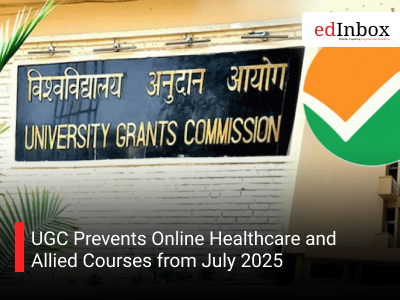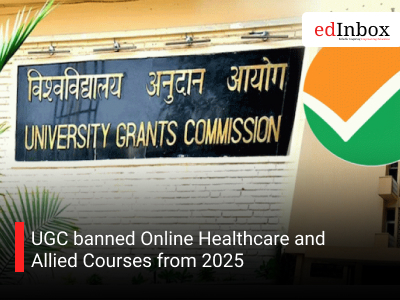The first things that come to most people's minds in relation to medicine are doctors and nurses. Medicine today has grown big in its dimensions, and indeed this sphere needs much more than stethoscopes and surgeries. Behind every hospital, health campaign, app, or clinical breakthrough is a set of people working in professions that don't require MBBS or a nursing degree but are just as vital to the system.
With every shift in priority that characterizes public health, awareness of mental health grows. And with each growth in technology in medicine, so does the increase in the pool of competent professionals in a host of nonclinical fields. Whatever your background may be in science, technology, humanities, or management, there is a healthcare career best suited for you.
Here are eight rewarding careers in healthcare that don't involve becoming a doctor or a nurse but are in high demand and hold value.
The interests of professionals in public health are focused on the improvement of health at the population level, and they do not focus their attention on individual patients. They design and carry out various campaigns for raising awareness, analysis of disease trends, formulation of health policies, and management of the community's health. Their work, be it in the control of infectious diseases or in the promotion of nutrition and proper sanitation, involves large groups of people.
Most professions in public health come out of government agencies, global health organizations like the WHO, and NGOs. Life sciences, sociology, psychology, or statistics provide good grounding, although many professionals get a Master's in Public Health that specializes them in this field.
-
Clinical research associate
CRA forms the very base on which any drug, vaccine, or treatment is developed. They support organization and execution in order to assure that research will be ethical and in compliance with all regulatory requirements. Clinical Research Associate: CRAs develop trial protocols, manage data collection, and contact participants at all levels of a trial, so that any medical breakthrough will be brought to the market in full safety. This field is ideal for those professionals qualified in life sciences, pharmacy, biotechnology, or allied health. The job involves a mix of science and project management; thus, it opens up opportunities not only with pharmaceutical companies but also in hospitals and research institutions.
-
Medical and Health Writer:
If one has a passion for science and likes to communicate, then medical writing might be just what he or she is looking for. Health writers can create everything from documentation of scientific research and regulatory papers to guides for patients, blog posts, and app content. Their role is basically to transform complicated medical terminology into clear, accessible language that will educate and inform. Many work with pharmaceutical companies and hospitals, while others create digital health platforms and media. This career path is associated with a science background, joined with great writing skills. People with training in journalism or communications are entering the field, together with some niche medical writing certifications.
-
Healthcare Administrator:
Healthcare administration looks into the management of the business and operational sides of medical facilities. Administrators are responsible for making sure a hospital, clinic, or health network runs smoothly by organizing staff, budgeting, procurement, patient services, and compliance. This is a specialty for those who enjoy managing, leading, and thinking in systems. It is open for students coming from commerce, management, or hospital administration backgrounds. Most of them eventually do an MBA in healthcare or some kind of specialized diplomas. As a matter of fact, with private hospitals and health-tech platforms multiplying fast, the demand for skilled administrators keeps going up.
-
Counsellor or Mental Health Therapist:
Mental health professionals help people overcome emotional, psychological, and behavioral challenges. As a matter of fact, with growing awareness of mental wellness, trained counsellors and therapists are sought after in schools, colleges, hospitals, and even in private practice. Their services mainly include conducting talk therapies, offering emotional support, and teaching coping mechanisms to deal with anxiety, trauma, depression, and grief. The typical paths leading to this profession include a bachelor's degree in Psychology followed by postgraduate qualifications in Counseling, Clinical Psychology, or Psychotherapy. It is a deeply personal, meaningful, and socially impactful career.
-
Health Informatics Specialist
If you have interests in technology, data, and health, then Health Informatics is quite a relevant career. Health informaticians manage information and develop digital health systems, smooth the flow of information across hospitals and clinics. That would be anything from developing infrastructure for an electronic medical record system to the use of AI in support of clinical diagnosis or ensuring patient data privacy. With the movement of hospitals toward digital transformation, it is very important. It will be ideal for computer science, data analytics, or bioinformatics or IT background students; nowadays, special certifications in Health Informatics are available everywhere.
-
Allied Health Professional
It also comprises the allied healthcare professionals who help with diagnosis, treatment, and rehabilitation: physiotherapists, radiology and laboratory technicians, occupational therapists, speech-language pathologists, and dieticians. They may work in a team with a doctor or a nurse but may have their independent fields. Their work is hands-on and often makes a real difference in recovery and long-term wellbeing. Entry requirements into these professions in most instances are a minimum of a diploma or a degree course in an allied health group such as physiotherapy, occupational therapy, radiography, and nutrition sciences.
-
Health-tech and startup roles
Healthcare innovation is having one of its finest moments, and startups are leading in building everything from teleconsultation platforms and fitness apps to artificial intelligence diagnostics and tools for mental health. These companies hire professionals in product management, UX design, digital marketing, operations, and community management. You don't need a medical degree, just a passion for solving health problems and building user-friendly solutions. Whether it is tech, design, media, or business, the health-tech space is full of dynamic, mission-driven roles that mix creativity with impact.
The Bottom Line:
A career in health doesn't have to mean clinical practice. Whether your passions are with policy, technology, therapy, communication or management, there is a pathway that best fits your skillset and passions. Global healthcare challenges have never been so complex and multi-faceted, and the need for a diverse, multi-disciplinary workforce has also never been greater. If ever you have wanted to work in health without seeing yourself as a doctor, this may be an especially good time to consider some of the many ways you can make a meaningful difference







